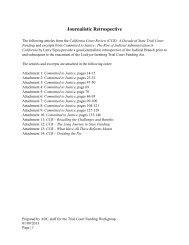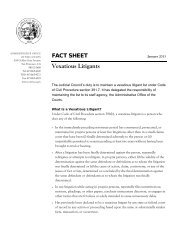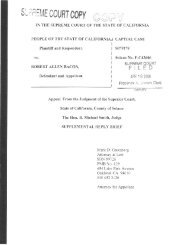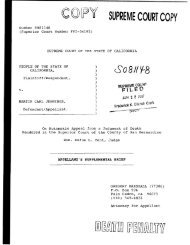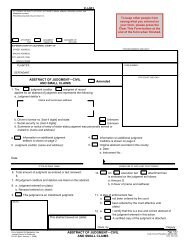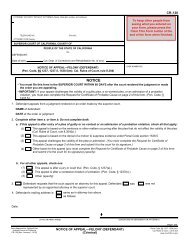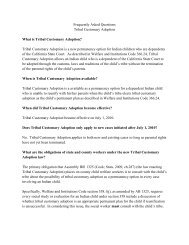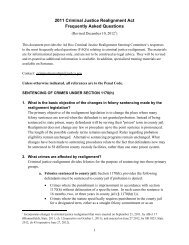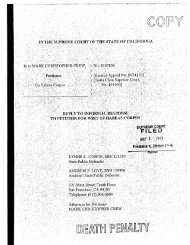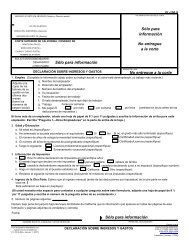Appellant, William Satele, Reply Brief - California Courts - State of ...
Appellant, William Satele, Reply Brief - California Courts - State of ...
Appellant, William Satele, Reply Brief - California Courts - State of ...
You also want an ePaper? Increase the reach of your titles
YUMPU automatically turns print PDFs into web optimized ePapers that Google loves.
impasse, and that it was important that the trial court make the necessary inquiry.<br />
The trial court refused all requests for further inquiry. On each <strong>of</strong>these occasions,<br />
the trial court responded to counsel's comments with a restatement <strong>of</strong> its ruling,<br />
which appellant has set forth in the following section.<br />
For the purposes <strong>of</strong> the present discussion, however, the point appellant<br />
makes is that the record shows to a demonstrable reality that Juror No. 1D's<br />
responses to the court's inquiry, the jury foreperson's responses and notification <strong>of</strong><br />
impasse, and the temporal proximity <strong>of</strong> the events created a confusion as to the<br />
status <strong>of</strong> the penalty verdict, and that the trial court refused the repeated requests<br />
to have the matter clarified. On the other hand, the record very clearly does not<br />
support to a demonstrable reality respondent's contention that Juror No. 10 caused<br />
the jury to change its unanimous vote for the death penalty to a 10-2 deadlock.<br />
Accordingly, this flawed factual construction must be rejected.<br />
2.The Trial Court's Various Restatements Of Its Ruling<br />
Barnwell explained that under the demonstrable reality standard the<br />
reviewing court must be assured that the trial court's conclusion is manifestly<br />
supported by the evidence upon which the court actually relied. The reviewing<br />
court therefore must consider not only the evidence, but also the record <strong>of</strong>reasons<br />
provided by the trial court. (People v. Barnwell, supra, 41 Ca1.4th at p. 1053.)<br />
In this case, the trial court provided multiple restatements <strong>of</strong> its ruling.<br />
These restatements show that although the court initially concluded Juror No. 10<br />
had committed misconduct by discussing the case with nonjurors, in its final<br />
restatement <strong>of</strong> its ruling, the court found Juror No. 10 had committed misconduct<br />
because she had been influenced by outside sources. <strong>Appellant</strong> reproduces the<br />
court's articulations <strong>of</strong> its ruling below. The record <strong>of</strong> reasons provided by the<br />
court are not supported by the evidence to a demonstrable reality.<br />
Following the hearing with Juror No. 10, summarized in the opening brief<br />
(AOB 264-268), the defense asked the court to inquire and clarify whether the jury<br />
136



